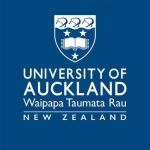Study to help in the treatment of gout
Researchers from The University of Auckland are embarking on a study to understand why gout, a common inflammatory arthritis, attacks certain joints.
Principal Investigator Dr Justin Fernandez and Dr Kumar Mithraratne from the Auckland Bioengineering Institute (ABI), and Associate Professor Nicola Dalbeth, from the Faculty of Medical and Health Sciences, have received a $117,304 research grant from The Auckland Medical Research Foundation for the study.
The two year study will focus on the foot and look to answer whether biomechanical loading or tissue stress within the foot correlates to gout-affected sites.
Dr Fernandez says that while gout is a well-known condition, little research has been conducted so far investigating biomechanical links with the condition.
“The information we get from the study will help us to understand if biomechanical factors can explain gout and inform future treatment strategies.”
Gout, which causes joint damage and severe joint pain, is estimated to affect between 5 percent and 10 percent of New Zealand men. The most common place for gout to develop is the toe joints, however, the joints of the ankles, knees, hands and elbows can also be affected.
The condition is caused by elevated levels of urate in the blood which crystallize, and then deposit in joints, tendons and surrounding tissues. The majority of gout sufferers are adult men and it is more common in people of Maori and Pacific Island descent and people who are overweight.
“Gout is strongly associated with obesity and features of wear-and-tear arthritis, suggesting that loading on certain joints may play a role in the development of the disease,” says Dr Fernandez.
The University is looking to recruit 40 participants for the study - 20 people with a high body mass index (BMI) and 20 people who fall within the healthy BMI range.
As part of the study the walking and running habits of participants will be captured and analysed in the ABI’s gait lab and the data combined with a computational model of the foot to work out bone erosion and tissue stress.
This information will be compared to gout ‘hot spots’ detected by specialist imaging technology led by Dr Dalbeth from the School of Medicine.
“We will use the gait information with a computational model of the foot to work out bone erosion and tissue stress. We will look for correlations between foot stress and bone erosion with tophus formation (deposits of uric acid crystals in the tissues) imaged using dual-energy CT,” says Dr Fernandez.
The study may provide evidence for the role that biomechanics plays in the development of gout and provide justification for future studies assessing gait modification and foot stress rebalance as strategies in the clinical management of gout, says Dr Fernandez.
